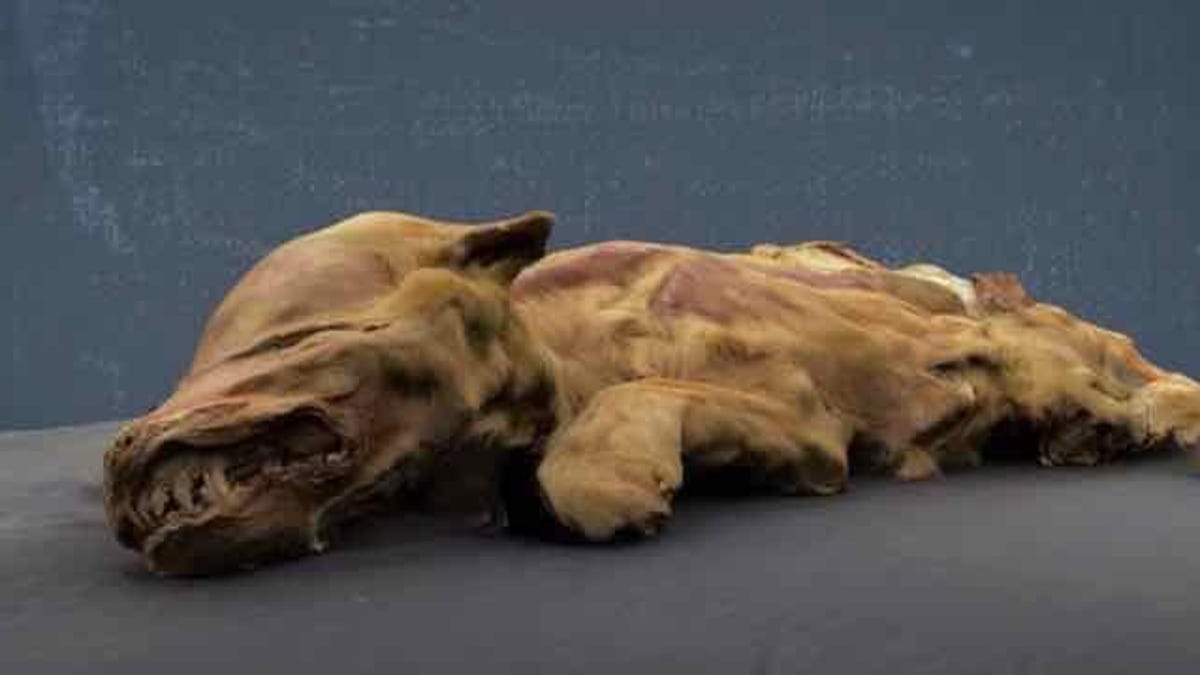'Most complete wolf mummy ever' offers 57,000-year-old clues
Missing only her eyes, the mummified pup gives scientists more insight into how ancient wolves lived.

Here's a closer look at the mummified wolf pup found in the Yukon.
A well-preserved female wolf pup found in the Canadian permafrost is thought to have lived about 57,000 years ago and could give scientists more clues about the life of the ancient wolf species.
The mummified wolf pup was discovered in melting permafrost in Canada's Yukon in 2016 by a gold miner. The wolf specimen was sent to the study's lead author, Des Moines University anatomy professor Julie Meachen, for carbon dating and DNA analysis.
According to a new study about the wolf published Monday in the journal Current Biology, Meachen and her team of scientists amassed a wealth of findings on the mummified pup's life and death.
The freezing temperatures of the Yukon's permafrost can preserve much of an animal's organs and tissue, mummifying it in the process. Because the pup is so well preserved, scientists were able to determine a possible cause of death, as well as her age, lifestyle, diet and relationship to modern wolves.
"She's the most complete wolf mummy that's ever been found," Meachen said in a statement Monday. "She's basically 100% intact -- all that's missing are her eyes. The fact that she's so complete allowed us to do so many lines of inquiry on her to basically reconstruct her life."
The researchers determined that the wolf pup was female and weighed just under 700 grams (1.5 pounds). They also estimate that she was seven weeks old when she died, most likely from being buried in the wolf den when the entrance collapsed.
The mummified wolf pup was named Zhùr (which means "wolf" in the local Indigenous Hän language) by the scientists writing the study.
Wolves from this period typically ate sizable land animals, but when the researchers analyzed the mummified pup's diet, they found it mostly consisted of fish, suggesting she or her pack may have hunted fish in nearby rivers.
"Normally when you think of wolves in the Ice Age, you think of them eating bison or musk oxen or other large animals," Meachen said. "One thing that surprised us was that she was eating aquatic resources, particularly salmon."
The scientists also believe the mummified wolf pup is related to both ancient gray wolves that once dwelled in Eurasia, as well as modern gray wolves (Canis lupus) from North America.
While the mummified wolf pup is an extraordinary find, scientists are bittersweet about its discovery, especially since climate change is making permafrost melt faster than ever before.
"One small upside of climate change is that we're going to find more of these mummies as permafrost melts," Meachen said. "That's a good way for science to reconstruct that time better, but it also shows us how much our planet is actually warming. We really need to be careful."

